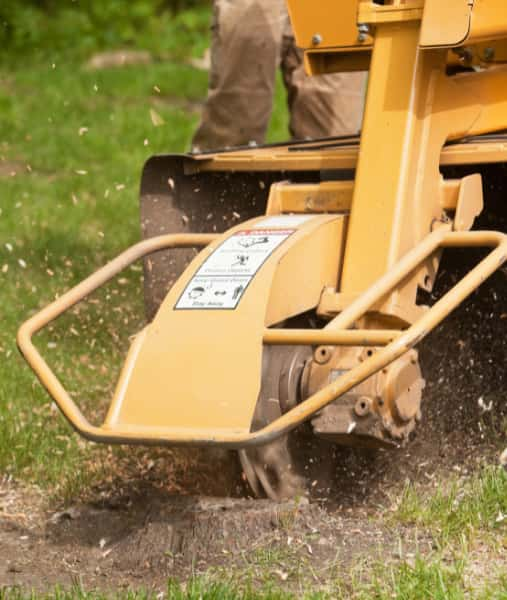In the realm of tree care, tree pruning stands out as a vital practice that not only enhances the health and appearance of trees but also plays a critical role in infection control. Trees, like all living organisms, are susceptible to diseases, which can spread rapidly if left unchecked. For homeowners and property managers in Fareham, West Sussex, proper and timely tree pruning by professionals can be an effective means of protecting trees from infectious diseases. In this article, we’ll explore how tree pruning can prevent the spread of infections and why it’s essential for maintaining healthy trees.
The Role of Tree Pruning in Infection Control
Tree pruning involves the selective removal of branches or sections of a tree that are dead, diseased, or damaged. When executed with precision and expertise, this process can significantly reduce the spread of infections within the tree itself and to neighbouring trees. Removing infected branches at the right time ensures that disease-causing pathogens do not spread further, which can otherwise lead to tree death and, eventually, the removal of the entire tree.
Identifying Infected Areas for Targeted Pruning
One of the first steps in effective tree pruning for infection prevention is identifying the parts of the tree that are affected. Fungal infections, bacterial diseases, and pests often target specific areas, such as branches, leaves, or roots, and show visible signs like discolouration, spots, or unusual growths. By examining the tree closely, trained arborists can identify these problem areas and determine the appropriate pruning method to minimise infection spread.
Benefits of Pruning Infected Branches
1. Preventing Cross-Contamination
- Infected branches act as carriers, allowing pathogens to spread from one part of the tree to others. By promptly removing these branches, tree pruning stops pathogens from travelling through the tree’s vascular system, preventing contamination of healthy areas.
2. Improving Tree Resilience
- Pruning enhances air circulation and sunlight exposure within the tree, which fosters a healthier environment less prone to fungal and bacterial growth. Healthier trees have stronger immune responses, making them more resilient to future infections.
3. Reducing the Risk to Nearby Trees
- Certain tree diseases are highly contagious and can quickly spread to other trees on a property if not managed. By isolating and removing infected sections of a tree, tree pruning helps protect surrounding trees and the broader ecosystem, particularly in areas with dense tree populations.
The Pruning Process: Timing and Precision
Pruning requires more than just cutting away branches; it involves understanding the biology of each tree species, the timing of infections, and the type of pathogens involved. The ideal pruning season varies, but late winter to early spring is often recommended, as trees are generally dormant, and the risk of spreading disease is lower.
Professional tree surgeons use sterilised equipment to prune each branch, ensuring that no cross-contamination occurs during the process. Every cut is made carefully, as incorrect pruning techniques can create entry points for pathogens, further complicating the infection control process.
Pruning for Specific Tree Diseases
- Dutch Elm Disease
- Caused by a fungus spread by beetles, Dutch Elm Disease can devastate elm trees if not controlled. Pruning infected branches early can prevent the disease from taking over the entire tree.
- Oak Wilt
- A fungal disease affecting oak trees, oak wilt spreads through root grafts and insect vectors. Pruning in the dormant season and removing infected branches immediately can contain its spread.
- Apple Scab
- Affecting apple and crabapple trees, apple scab can lead to defoliation and weakened trees. Removing infected leaves and branches promptly helps reduce the spread.
Why Professional Pruning Is Essential
While minor pruning tasks can sometimes be handled by homeowners, dealing with tree infections requires the expertise of a professional arborist. Professional tree surgeons have the knowledge, equipment, and skills needed to prune trees without causing further harm. They can also assess the severity of the infection and recommend additional treatments if necessary.
Hiring a certified tree surgeon ensures that all pruning practices are in line with industry standards, preserving the tree’s health and integrity. This is particularly important for preventing infections, as improper pruning can leave the tree vulnerable to new pathogens.
Conclusion
Tree pruning is more than a maintenance practice; it is a preventive measure that safeguards trees from infections and enhances their longevity. For property owners in Fareham, West Sussex, regular pruning by professionals like LM Tree Surgery Fareham can ensure that trees remain healthy, beautiful, and free from the risk of infection spread. By investing in proper tree care, you not only protect your trees but also contribute to a healthier, more vibrant landscape.
If you are concerned about the health of your trees or suspect an infection, reach out to us today. Our experienced team can assess, prune, and provide the necessary care to keep your trees in optimal condition. Protect your trees from infections with expert tree surgery services that put health and quality first.
Call us on: 01329 759 693
Click here to find out more about LM Tree Surgery Fareham
Click here to complete our contact form and see how we can help with your trees needs.

